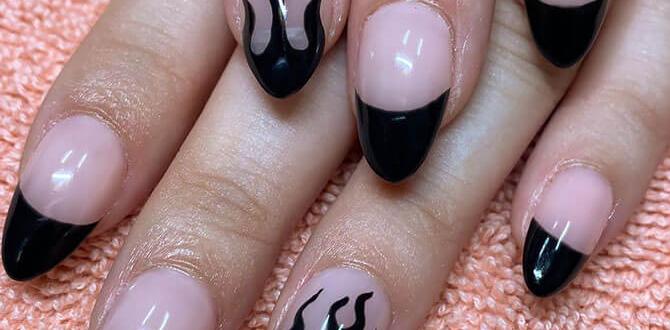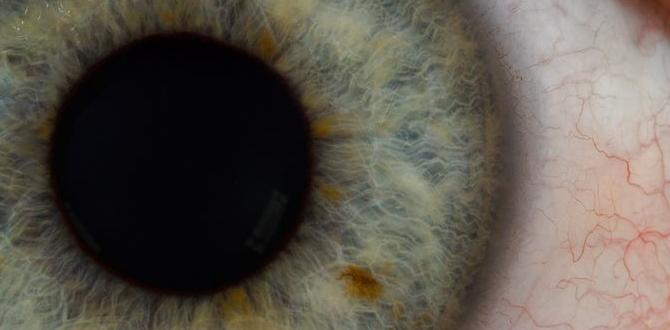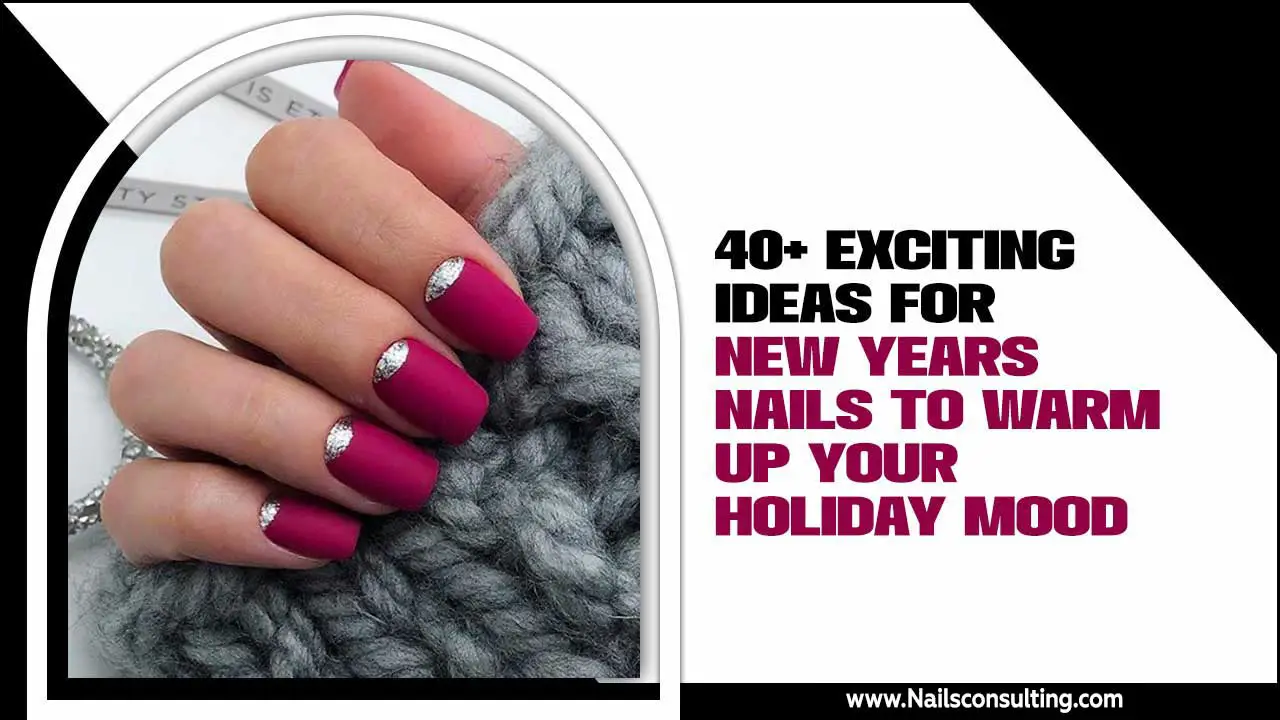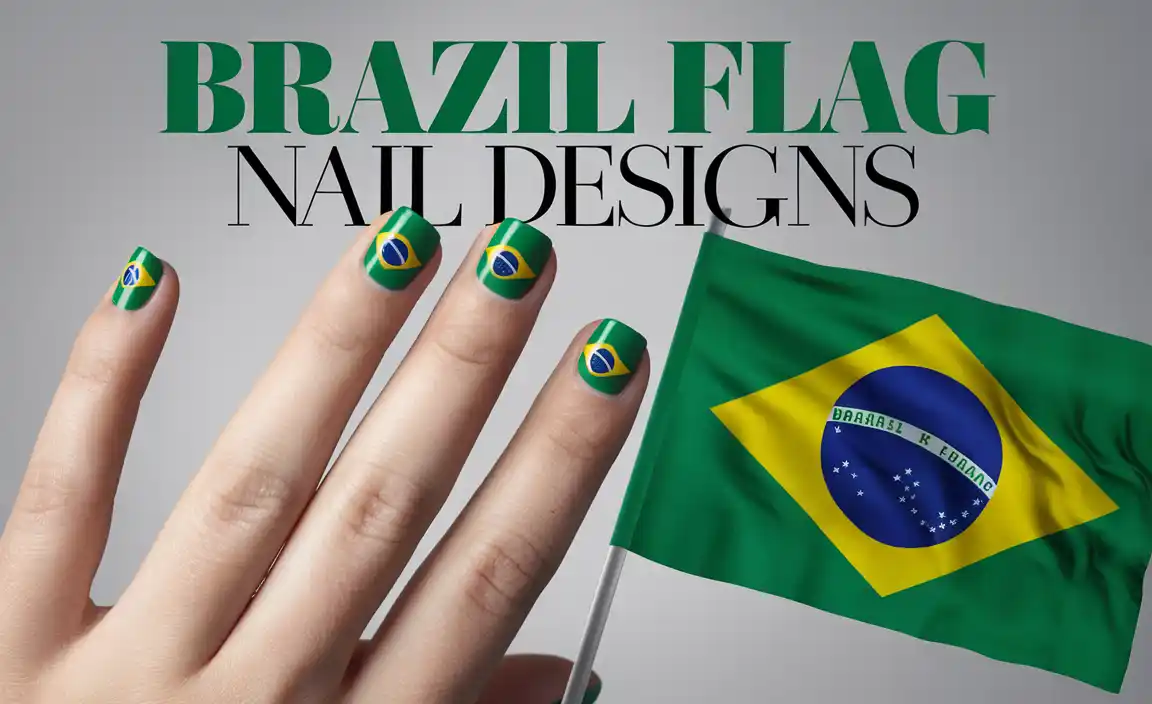Do you want to learn how to do nail art step by step? This guide provides easy-to-follow instructions, essential tools, and simple design ideas to help you create stunning manicures at home, even if you’re a complete beginner. Get ready to unleash your creativity and make your nails a canvas for self-expression!
Dreaming of Pinterest-worthy nails but think nail art is too tricky? You’re not alone! Many of us admire intricate designs, only to feel a little intimidated about trying them ourselves. The good news? Creating beautiful nail art isn’t just for the pros. With a few key tools and some simple steps, you can transform your nails into mini masterpieces. Forget expensive salon visits – we’re going to break down how to do nail art step by step. Get ready to have fun, get creative, and absolutely slay your next manicure!
Unlock Your Inner Nail Artist: The Absolute Essentials
Ready to dive into the exciting world of nail art? It’s all about starting with the right foundation and tools. Think of it like painting – you wouldn’t start a masterpiece without brushes and paints, right? Your nails are no different! We’re going to cover the must-have items that will make your nail art journey smooth, fun, and incredibly rewarding. Let’s get your nail art kit ready!
Your Nail Art Dream Team: Must-Have Tools
Building your nail art toolkit doesn’t have to be overwhelming. You can start with a few versatile items and expand as you get more comfortable. Here are the essentials that will make a huge difference in your nail art creations:
- Base Coat: This is your nail’s best friend! A good base coat protects your natural nail from staining, helps your polish adhere better, and creates a smooth canvas.
- Top Coat: The grand finale! A top coat seals in your design, adds a glossy shine, and prevents chips, making your nail art last longer. Look for a quick-drying one to save time.
- Nail Polish: Obviously! Start with a few of your favorite colors. You’ll need at least one for your base color and a couple of contrasting shades for designs.
- Dotting Tools: These are a lifesaver for beginners! They come in various sizes (like tiny ballpoints) and are perfect for creating dots, small flowers, and other simple patterns.
- Thin Nail Art Brush: A fine-tipped brush is fantastic for drawing lines, swirls, and intricate details. Look for brushes designed specifically for nail art; they have slimmer bristles.
- Striping Tape: This is a game-changer for creating clean, straight lines and geometric designs. It comes in different widths and colors.
- Dotting Tool Alternative: Don’t have dotting tools? No problem! The end of a bobby pin, a toothpick, or even the tip of a pen can work in a pinch for making dots.
- Clean-up Brush: A small, angled synthetic brush (like a tiny eyeshadow brush) dipped in nail polish remover is perfect for cleaning up stray polish around your cuticles and fingertips.
- Nail Polish Remover: Essential for correcting mistakes and cleaning up edges. Acetone-free remover is gentler on your nails and cuticles.
- Cotton Swabs/Pads: For general cleanup and removing excess polish.
Preparing Your Canvas: Nail Prep is Key!
Before any art can happen, your canvas needs to be perfect. Proper nail prep ensures your nail art looks polished (pun intended!) and lasts longer. Think of this as the spa treatment your nails deserve!
- Clean Nails: Start with clean, dry nails. Remove any old polish with nail polish remover.
- Shape Them Up: File your nails into your desired shape. Whether you love square, round, or almond, a neat shape makes a big difference. File in one direction to avoid weakening the nail. You can find great tips on shaping nails from dermatologists at the American Academy of Dermatology.
- Push Back Cuticles: Gently push back your cuticles using an orangewood stick or a cuticle pusher after softening them with cuticle oil or warm water. This creates more surface area for your design and gives a clean look.
- Buff (Optional): Lightly buffing the surface of your nails with a fine-grit buffer can help polish adhere better, but don’t overdo it – we want healthy nails!
- Wipe Down: Use an alcohol wipe or a cotton pad with nail polish remover to remove any oils or dust. This ensures your polish will stick well.
Step-by-Step: Your First Stunning Nail Art Designs
Now for the fun part! Let’s get creative with some beginner-friendly nail art techniques. These are designed to be easy to follow, so you can achieve gorgeous results right away.
Design 1: The Dotty Delight (Perfect for Beginners!)
Dots are a classic for a reason – they’re simple, versatile, and always look chic. This is a fantastic starting point for anyone learning how to do nail art step by step.
What You’ll Need:
- Base coat
- Your favorite polish color (for the base)
- 2-3 contrasting polish colors (for the dots)
- Dotting tool (or toothpick/pen tip)
- Top coat
The Simple Steps:
- Apply Base Coat: Paint one thin, even coat of your base coat on each nail. Let it dry completely.
- Color Your Canvas: Apply two thin coats of your base polish color. Allow each coat to dry slightly before applying the next. This ensures a smooth, opaque finish.
- Get Dotting: Dip the tip of your dotting tool into one of your contrasting polish colors. Start creating dots on your nails. You can make them all the same size, or vary the sizes for a more dynamic look. Try making a simple pattern, like a small flower with a central dot, or just scatter them randomly.
- Mix and Match: Use your other colors to add more dots. You can create patterns like stripes of dots, clusters, or just go wild with random placement!
- Seal the Deal: Once your dots are completely dry (this is important!), apply a good layer of top coat over your entire nail. This smooths out any texture from the dots and locks your design in place.
Design 2: The Chic Stripe
Stripes add a touch of sophistication and can be incredibly easy with the right tools. This design looks complex but is surprisingly simple to master.
What You’ll Need:
- Base coat
- Base polish color
- Contrasting polish color (for the stripes)
- Striping tape OR a thin nail art brush
- Top coat
The Simple Steps (with Striping Tape):
- Prep and Base: Apply base coat and two coats of your base polish color as usual. Let it dry thoroughly. A fully dry base is crucial for striping tape to prevent lifting.
- Apply Striping Tape: Carefully place a strip of striping tape onto your dried base polish. Press it down firmly to ensure good adhesion and no air bubbles. You can place it horizontally, diagonally, or even create a V-shape.
- Paint Over: Paint a thin coat of your contrasting polish color directly over the striping tape. Make sure to cover the tape completely.
- The Reveal: While the top polish is still WET, carefully and slowly peel off the striping tape. Pull it away at an angle. This will leave a crisp, clean line.
- Let it Dry: Allow the stripe polish to dry completely.
- Add More (Optional): You can add more stripes using the same method, either with the same contrasting color or a different one. Just make sure the previous layer is dry before applying new tape.
- Top Coat: Once all your polish and stripes are dry, apply a generous coat of top coat. Gently go over the taped areas to smooth out any slight bumps.
The Simple Steps (with a Thin Nail Art Brush):
- Prep and Base: Apply base coat and two coats of your base polish color. Let it dry completely.
- Dip and Draw: Dip the tip of your thin nail art brush into your contrasting polish color. Wipe off any excess polish on the mouth of the bottle so you have a nice, fine line of polish on the brush.
- Create Your Lines: Gently and steadily draw your desired lines onto the nail. Practice on paper first if you’re nervous! You can create single lines, parallel lines, or even simple zig-zags.
- Clean Up: If you make any mistakes, use your clean-up brush dipped in nail polish remover to carefully wipe away any stray marks.
- Let it Dry: Allow the lines to dry completely.
- Seal It: Apply your top coat to protect your beautiful stripes.
Design 3: The Easy Ombre Fade
The ombre effect gives a sophisticated, blended look that’s surprisingly simple to achieve with a makeup sponge. It’s a great way to combine multiple colors!
What You’ll Need:
- Base coat
- Two or three complementary polish colors
- A clean makeup sponge (a regular kitchen sponge cut into small pieces works well too)
- Top coat
- Nail polish remover and clean-up brush
The Simple Steps:
- Base Color: Apply one coat of base coat and let it dry. Then, apply one thin coat of your lightest polish color. This will be the base for your fade.
- Prep the Sponge: Cut a small wedge from your makeup sponge. Apply a stripe of your first color near the top of the sponge, and then a stripe of your second color right next to it. If you’re using a third color, add it next to the second. Make sure the stripes of color are touching.
- Dab, Dab, Dab: Quickly and gently dab the sponge onto your nail, starting from the cuticle and moving upwards towards the tip. You may need to dab a few times to build up the color and blend it.
- Clean Up Edges: Immediately use your clean-up brush dipped in nail polish remover to wipe away any excess polish that got onto your skin or cuticles. This step is crucial for a clean look!
- Repeat for Intensity: If the color isn’t as vibrant as you like, you can reapply polish to the sponge and repeat the dabbing process. You can also transition from the light color to a darker one on a fresh section of the sponge.
- Add Sparkle (Optional): You can add a glitter polish over the top for extra dimension.
- Seal the Look: Once the polish is dry to the touch, apply a thick, generous coat of top coat. This will help smooth out the texture of the sponge application and make the ombre effect look seamless.
Taking Your Nail Art Further: Tips for Success
Once you’ve mastered the basics, you might be wondering how to elevate your nail art game. Here are some pro tips that will help you achieve stunning results every time.
- Patience is a Virtue: Nail art takes time. Don’t rush the drying process between coats or designs. Waiting for each layer to be mostly dry prevents smudging and ensures clean lines.
- Thin Coats are Best: Thick coats of polish take longer to dry and are more prone to smudging. Apply multiple thin coats for a smooth, durable finish.
- Practice Makes Perfect: Don’t get discouraged if your first few attempts aren’t flawless. The more you practice, the steadier your hand will become, and the better your designs will look. Try practicing on fake nails or even paper first!
- Experiment with Textures: Don’t just stick to glossy finishes. Matte top coats, glitter polishes, and even textured polishes can add a unique dimension to your nail art.
- Clean Up Promptly: Use that clean-up brush with nail polish remover to tidy up edges as you go. It makes a world of difference in how professional your manicure looks.
- Invest in Quality Tools: While you can start with budget-friendly items, investing in a few good quality nail art brushes and dotting tools can significantly improve your results and make the process easier. Brands like Born Pretty offer a wide range of affordable yet effective tools.
- Get Inspired: Look at Pinterest, Instagram, and nail art blogs for inspiration. Save designs you love and try to recreate them.
Essential Nail Care for Art Lovers
Beautiful nail art starts with healthy nails. Here’s how to keep your nails in top condition to support your artistic endeavors.
Nourishing Your Nails: The Foundation
- Hydrate Cuticles: Dry, flaky cuticles detract from any manicure. Apply cuticle oil daily, especially before bed, to keep them soft and healthy.
- Moisturize Hands: Hands are often overlooked. Regular hand lotion keeps the skin around your nails smooth and prevents dryness.
- Protect Your Nails: When doing chores or using cleaning products, wear gloves. This protects your nails from harsh chemicals and excessive exposure to water, which can weaken them.
- Healthy Diet: A balanced diet rich in vitamins and minerals, especially biotin, can contribute to stronger, healthier nails.
- Take Breaks: Give your nails a break from polish every so often. This allows them to breathe (though nails don’t technically breathe, this refers to avoiding constant chemical exposure) and recover.
Nail Health vs. Nail Art: A Delicate Balance
It’s important to remember that nail art should enhance your natural beauty, not harm your nails. Be mindful of the products you use and how you apply them.
- Choose Gentle Removers: Opt for acetone-free nail polish removers whenever possible. Acetone can be very drying to nails and cuticles.
- Avoid Harsh Filing: Don’t file your nails aggressively or back and forth. File in one direction to maintain nail strength.
- Don’t Pick or Peel: Resist the urge to pick at polish or polish remover. This can damage the nail plate and lead to peeling or breakage.
- Be Mindful of Chemicals: Some nail art products, like certain glues for nail gems, can be harsh. Use them sparingly and ensure good ventilation. For more on nail health, consult resources from the NHS.
Troubleshooting Common Nail Art Hiccups
Even the most experienced nail artists encounter challenges. Here’s how to fix some common nail art problems.
| Problem | Solution |
|---|---|
| Polish is Smudged/Streaky | If it’s slightly smudged, you might be able to gently smooth it with your finger or a clean-up brush. If it’s badly smudged, it might be time to remove and start again. Ensure polish is fully dry before moving to the next step. |
| Lines are Wobbly | Use a steady surface to rest your arm and hand on. Breathe slowly and try to paint in one continuous motion. Don’t press too hard. For crisp lines, striping tape is your best bet. |
| Dots Are Uneven | Dip your dotting tool consistently to get similar-sized dots. For the first few dots, wipe off excess polish. For subsequent dots, reload the tool as needed. Varying sizes can look intentional! |
| Top Coat Smears Design | This usually happens when the design polish isn’t fully dry. Wait longer! If it’s partially smeared, try a “one-stroke” top coat application – apply it quickly and gently without going over the same spot multiple times. |
| Polish Won’t Adhere Smoothly | Ensure your nails were clean and free of oils before applying polish. Use thin, even coats, and let each coat dry partially before the next. A good base coat also helps for a smoother finish. |
| Polish Chips Quickly | Make sure you’re sealing the edges of your nails with your top coat. This ‘capping’ action prevents the polish from lifting off the tip of the nail. Ensure your base and top coats are applied smoothly and evenly. |
Frequently Asked Questions (FAQ) About Nail Art
Here are some common questions beginner nail artists have:
Q1: How long does it take for nail art polish to dry?
A: Polish drying times vary




